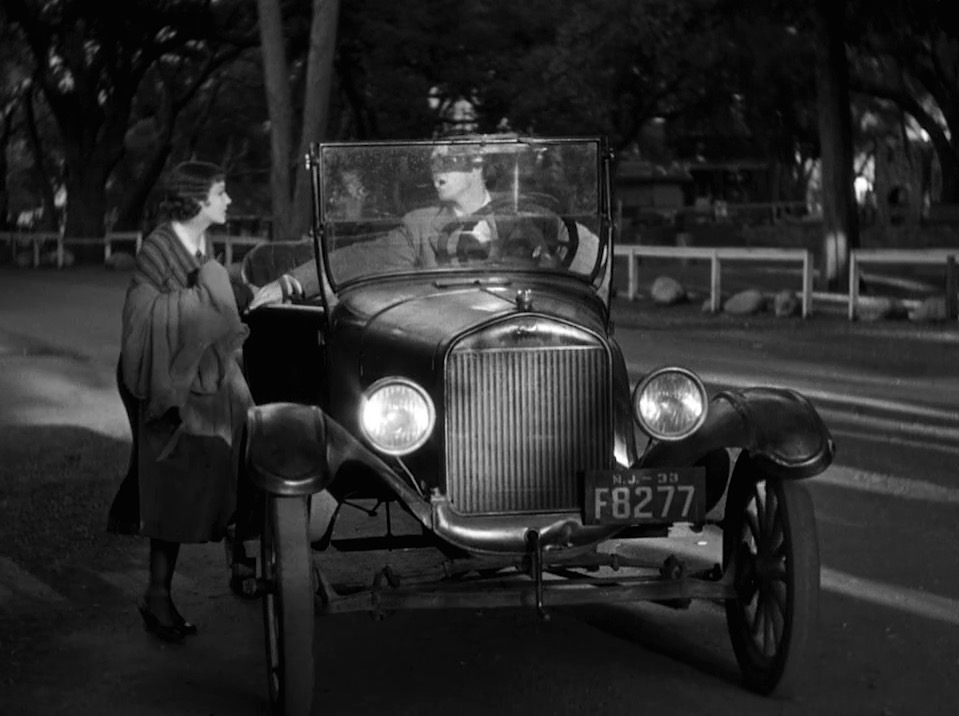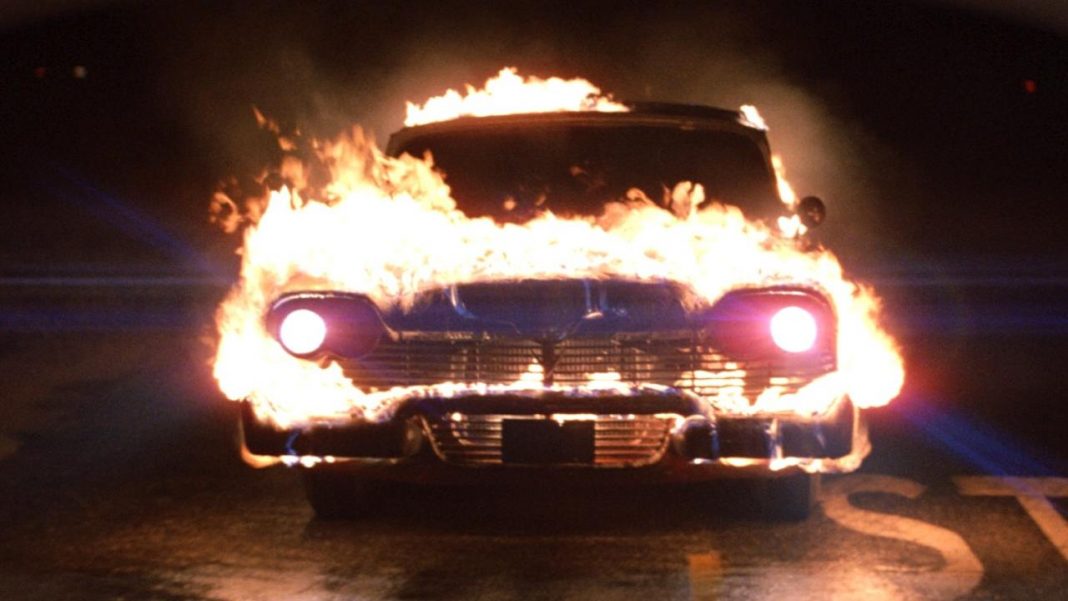While working on my master’s degree at Eastern Michigan University in the early 2000s, I devised an independent study focused on my growing interest in the relationship between women and cars. What follows is one of the response papers in which I provide a little background on the role of the automobile in film and conclude with a call to include more women in the cinematic driver’s seat. Over ten years later, I answered my own call by writing a paper on women and film that appeared in The Journal of Popular Culture. Here’s how that notion got started.
Henry Ford built the Model T as an affordable, utilitarian means of transportation. It wasn’t long after the first Ford rolled off the assembly line, however, that the automobile came to acquire meanings other than the basic mode of transport Ford envisioned. The motion picture industry developed almost in tandem to that of the automobile, so it is not surprising that film was instrumental in ascribing alternative meanings to the American car. In the infancy of the moving picture industry, the automobile is most often employed as a means to display the possibilities of the emerging film medium. Filmmakers experimented with both cinematic and automobile technology; they often called upon measures such as trick or stop-action photography to create outrageous scenes of “comic mayhem and dismemberment” (Smith 181). However, as the automobile became more familiar to the majority of Americans, audiences began to prefer films that contained a narrative. As Julian Smith writes in “A Runaway Match,” moviegoers began to respond more readily to “films that involved rather than excluded them” (181). Rather than a tool to demonstrate cinematic prowess, the car became an important element of the cinematic story.

The possibilities of both film and automobility were combined in a number of successful film scenarios. Elopement, rebellion, the chase, and the use of the car to instigate and resolve conflicts were some of the common themes in films that featured the automobile. Smith suggests the car in film was not just a means of transportation, but rather, was used to “transport characters – and the audience – into new realms” (182). In these early films, the car is often a tool for escape, seduction and heroism. It brings about happiness, success and true love. In many films of the early twentieth century, the car appears as a vehicle of fate, justice and divine will. However, as Smith remarks, filmmakers during this period do not attempt to use the car as a commentary on the social condition. Rather, the automobile is a character in a narrative; it is a vehicle that literally and figuratively moves the story forward.
As both car and film became more ingrained in American society, the car grew from a tool of storytelling to a symbol of both the culture and the individual behind the wheel. Powerful cars suggest powerful drivers; speed, control and risk-taking behavior are masculine attributes that are often used to tie the car to the man who drives it. As A.L. Reese notes in “Moving Spaces,” the car is often a disturbing presence in film, “in part because of what it can do (break down, explode or kill, for example) but also because of what it connotes” (84). Protagonists use the car as a weapon, calling on its strength and power to manipulate and destroy as an extension of themselves. For example, in the film Christine, the car is not only a vehicle of validation, but of personal vengeance as well. Automobiles in film became symbolic not only through appearance, but for where and how they traveled. The 1950s automobile was, as Eric Mottram writes, “heaped with adornment, worn as a badge of status, and admired as a piece of jewelry” (107). And during the 1970s, the automobile found a new role in the ubiquitous road movie; the car became the “major vehicle for a primary and traditional American hero” (110).

What is notable about the examples of the automobile in American film is that the individual behind the wheel is overwhelmingly male. Thus the male driver not only controls the car, but the narrative of the film as well. In film, the car as a symbol of escape, adventure, power, rebellion, self-discovery, control, desire and destruction is irrevocably linked with masculinity. If females are present, it is as passengers; they exist to be impressed, wooed or conquered by the car and the man who drives it. The car in American film not only reaffirms and secures the tie between the automobile and masculinity, but more importantly, suggests that only the male is capable of steering the course of the narrative. Feminist film critic Laura Mulvey, in her discussion of the male gaze, asserts that the traditional role of men in cinema has been to move the story forward. When a man gets behind the wheel of a car onscreen, he is literally and figuratively determining the direction of the film, and the narrative within it.

In The Road Story and the Rebel, Katie Mills discusses the advent of female automobility in the films of the 1970s. In the genre Mills describes as “New Hollywood,” young, ambitious auteurs, such as Spielberg, Coppola, Scorsese and Bogdanovich, embrace the road story as representative of the rebellious time period. As Mills argues, the filmmakers of this era sought to distinguish themselves as avant-garde, and often did so by creating road films with women as central characters. However, social activism did not spear the desire to create such films; rather, it was increased opportunity and recognition as groundbreaking artists that the filmmakers were after. Mills remarks, “there was a growing curiosity about the sexual revolution and growing pressure to represent women as more than just wives” (134). Yet while the New Hollywood films focus on women as symbols of progressive politics, feminist gender philosophy is rarely invoked. Women’s rebellion is portrayed as sexual liberation, which titillates, rather than challenges, both the male protagonists and audience members. The young, New Hollywood directors call upon culturally approved conventions in the depictions of female characters; women are, with the exception of Bonnie Parker, passive, and motherhood is often a motive for going on the road. While female automobility is the focus of road films such as Alice Doesn’t Live Here Anymore, it is considered through a male lens. The women in these narratives act, in a sense, as “catalytic converters;” Mills remarks, “they get the men of the narrative into action, but their automobility does not represent social change” (192). It would take another 20 years before a film directly portrays women on the road because they are angry about patriarchy. As Carrie Khouri, screenwriter of the breakthrough film Thelma and Louise, tells us, “‘I just got fed up with the passive role of women. They were never driving the story, because they were never driving the car” (Mills 193). Thelma and Louise not only put women in the driver’s seat, but also brought national attention to female automobility as “the desire for autonomy from patriarchal structure and against male privilege” (Mills 194). The film effectively and purposefully skews the meanings traditionally associated with cars and those who drive them.
The automobile in American film has alternatively embraced a myriad of qualities, which include rebellion, adventure, romance, power, status, destruction and the American spirit. However, until very recently, such attributes have been primarily associated with masculinity and the male driver. The meanings traditionally ascribed to automobiles, in films and in real life, do not take into consideration the alternative relationship of women and cars. In order to disrupt such ingrained notions of masculine automobility, women must not only take their place behind the wheel in motion pictures, but more importantly, control the direction, and therefore the narrative, of the film itself.
Mills, Katie. The Road Story and the Rebel: Moving Through Film, Fiction, and Television. Carbondale, Ill. : London: Southern Illinois University Press , 2006.
Mottram, Eric. “Blood on the Nash Ambassador: Cars in American Films,” in Autopia: Cars and Culture. P. Wollen and J. Kerr eds. London: Reaktion, 2002.
Reese, A.L. “Moving Spaces,” in Autopia: Cars and Culture. P. Wollen and J. Kerr eds. London: Reaktion, 2002.
Smith, Julian. “A Runaway Match: The Automobile in American Film, 1900-1920, The Automobile and American Life, D. L. Lewis & L. Goldstein, eds. Ann Arbor, University of Michigan Press, 1983.